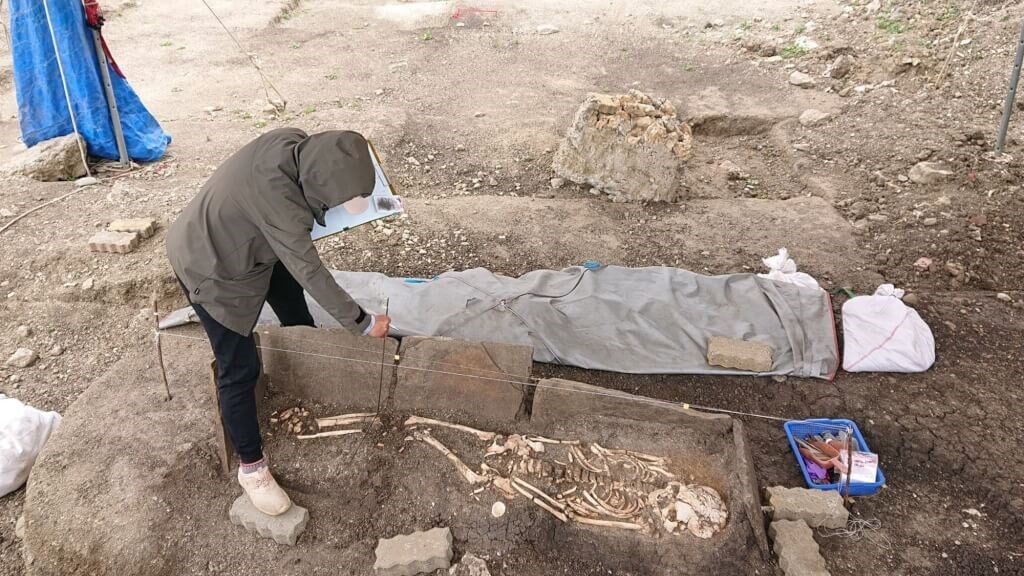Human skeletons, and relics found in Pingtung date back 4,000 years: Archaeologists
Taipei, July 27 (CNA) Archaeologists in Taiwan confirmed Wednesday that a large number of human skeletons and shell tools unearthed in Pingtung County are about 4,000 years old, which makes the shell tool site the oldest in the Pacific region.

Chiu Hung-lin (邱鴻霖), an associate professor at National Tsing Hua University’s (NTHU) Institute of Anthropology, said he and his team had learned about the site in Eluanbi Park on the southern tip of Taiwan in 2017, when work began on a project to convert the dilapidated shops in the area into green structures.
The project was halted when the contractor found shell tools, human skeletal remains and slate coffins in a shallow site in the park, Chiu told CNA.
He said the Kenting National Park Headquarters then commissioned the NTHU team, led by him and Professor Li Kuang-ti (李匡悌), to excavate the site.
Between 2019 and 2021, the team unearthed a large number of relics and artefacts, including 51 skeletons, 10 of which were buried in slate coffins with coral funeral objects, Chiu said.

Among the findings were several finished and unfinished shell tools, as well as relics that indicated it was a site for making those tools, which provided proof that the early inhabitants of Eluanbi used “unique” shell-crafting techniques, Chiu said.
The site also offered insights into the funeral customs of the people in those times, he said, adding that anthropologists could also make new discoveries by studying the human remains found at the site.
The skeletal remains and shell tools date back about 4,000 years, which means it is the oldest shell tool site found on any island in the Pacific region, Chiu said, adding that it was also the largest.
Meanwhile, the discovery of an archaeological site on a commercial project has negatively affected the livelihood of the local residents, Chiu said, calling on authorities to find a balance between development and the preservation of cultural heritage sites.
He also urged the local government to address the issue of proper facilities for the exhibition of the artefacts so that people can learn about the archaeological and historical value of the findings.
Coupled with the renovation of the shops, this would help to boost Pingtung’s tourism and the income of its residents, Chiu said.
